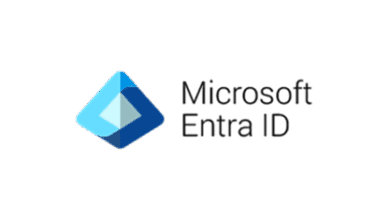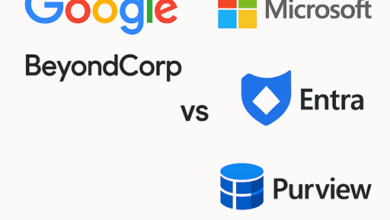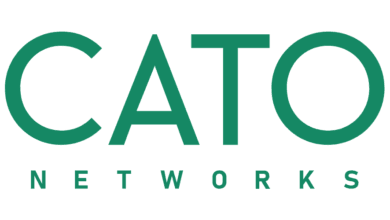Palo Alto Networks and the Power Behind Its SASE Portfolio
In today’s fast-moving cybersecurity landscape, traditional perimeter-based defenses are no longer enough. Users are working remotely, applications are in the cloud, and threats are evolving faster than most organizations can keep up. That’s why many IT and security leaders are looking to Secure Access Service Edge (SASE)—a model that combines networking and security into one unified, cloud-delivered framework.
Among the major players in this space, Palo Alto Networks stands out for offering one of the most robust and deeply integrated SASE portfolios on the market. While some vendors have taken a “cloud-first” or “born-in-the-cloud” approach, Palo Alto brings decades of enterprise-grade security innovation to its SASE architecture, bridging traditional infrastructure and modern access needs in a meaningful way.
At the core of Palo Alto’s SASE solution is Prisma Access, a comprehensive cloud-delivered security platform. Prisma Access acts as the foundation for securing users and applications wherever they are—whether in the office, at home, or on the road. But what makes Prisma Access more than just another remote access solution is how it weaves together multiple advanced security technologies into a unified, scalable service.
First, there’s the Zero Trust Network Access (ZTNA) component, which moves beyond the limitations of VPNs by enforcing identity- and context-based access to internal applications. Rather than offering broad network-level access, Prisma Access verifies the user, checks the device posture, evaluates behavior, and applies least-privilege principles—all in real time. It’s a critical step toward implementing a true Zero Trust architecture, and one Palo Alto delivers with maturity.
Another critical part of the portfolio is the next-generation Secure Web Gateway (SWG). Prisma Access provides deep inspection of internet-bound traffic, including SSL-encrypted sessions, without the latency or performance issues commonly associated with legacy proxy-based systems. This is powered by Palo Alto’s security engine, the same threat intelligence and machine learning that underpin their on-prem firewalls, now scaled globally in the cloud.
Cloud application security is also front and center. With native Cloud Access Security Broker (CASB) capabilities, Prisma Access gives organizations visibility into sanctioned and unsanctioned SaaS usage, allowing administrators to monitor user activity, restrict risky behavior, and prevent data loss across platforms like Microsoft 365, Google Workspace, Salesforce, and others. The integration between CASB, SWG, and DLP is seamless, enabling enforcement of consistent policies across cloud, web, and private applications.
Speaking of data protection, Palo Alto’s Data Loss Prevention (DLP) capabilities have made major strides in recent years. Their enterprise-grade DLP engine can identify sensitive data in motion and at rest, across multiple channels, using advanced classification methods including pattern recognition, document fingerprinting, and machine learning. What’s particularly notable is how these DLP policies are applied uniformly through a single console—reducing administrative overhead and simplifying compliance.
Of course, no modern SASE solution would be complete without strong threat prevention, and here Palo Alto Networks plays to its strengths. Prisma Access is backed by WildFire, Palo Alto’s advanced malware analysis environment, as well as Cortex XDR, which uses behavioral analytics and AI to detect known and unknown threats. Combined with DNS security, URL filtering, anti-phishing, and real-time sandboxing, it forms one of the most advanced security stacks available in a cloud-delivered format.
Performance and scalability are another area where Prisma Access delivers. Palo Alto has invested heavily in building out a global network of Points of Presence (PoPs), ensuring that users connect through the closest available node for optimal speed and reduced latency. This is a major differentiator, particularly for large, globally distributed organizations looking for consistent user experience without sacrificing security.
Managing all of this is made easier with Panorama, Palo Alto’s centralized management console. It allows teams to create and enforce security policies across both on-prem and cloud environments. That single-pane-of-glass experience is invaluable when trying to maintain visibility and control over a hybrid or multi-cloud infrastructure.
It’s also worth noting that Palo Alto continues to expand the capabilities of Prisma SASE with their acquisition strategy. Technologies like AIOps and SD-WAN (CloudGenix) have been brought into the fold, enabling network optimization and intelligent routing as part of the overall package. This positions Palo Alto not just as a security vendor, but as a full-stack SASE provider capable of delivering connectivity, visibility, and protection in one go.
So, is Palo Alto Networks the right SASE partner for your organization? It depends. If you’re looking for a deeply integrated, enterprise-grade security platform that prioritizes visibility, control, and proven threat protection—especially if you’re already in the Palo Alto ecosystem—it’s a compelling choice. While other vendors may offer a more lightweight or modular experience, few match the depth and breadth of security features that Palo Alto brings to the table.
As the SASE market matures and organizations prioritize converged security and networking strategies, Palo Alto Networks is well-positioned to lead. It’s not just about remote access anymore—it’s about delivering consistent, intelligent security everywhere your users and data go. With Prisma Access, Palo Alto isn’t chasing the future of SASE. It’s helping define it.



